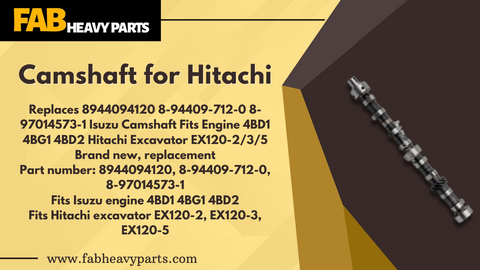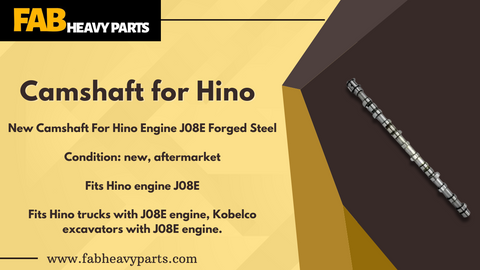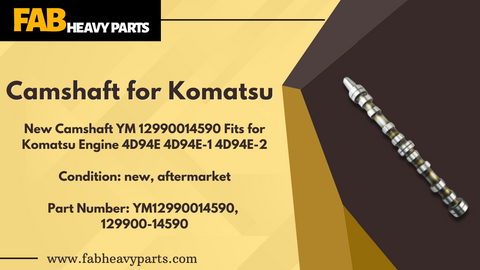
The engine camshaft and crankshaft are essential components in the operation of a combustion engine. While the camshaft is responsible for opening and closing the valves, allowing for the intake of air and fuel and the exhaust of combustion gases, the crankshaft plays a crucial role in converting the linear motion of the pistons into rotational motion. The connecting rods aid in transferring this motion from the pistons to the crankshaft. Together, these components work harmoniously to ensure the proper functioning of the engine and efficient combustion processes.
Discovering the Camshaft's Location
The camshaft is a crucial component of an internal combustion engine, responsible for the precise timing of the opening and closing of valves within the engine. Positioned either at the top of the engine, referred to as an overhead cam, or within the engine block, the camshaft plays a pivotal role in the engine's functionality.
In modern internal combustion engines, the number of camshafts can vary, with some engines utilising up to four camshafts depending on the engine's design and the number of cylinder heads. The configuration of valves per cylinder can also differ, customised to suit the specific requirements of the vehicle. However, regardless of the variation, all cylinders are equipped with a combination of intake and exhaust valves that are meticulously controlled by the camshaft. This intricate orchestration ensures the seamless flow of air and fuel into the combustion chamber while efficiently allowing exhaust gases to exit the engine.
How a Camshaft Works
The camshaft plays a crucial role in the operation of an internal combustion engine. It is responsible for transferring motion from the crankshaft to the valvetrain, thereby controlling the opening and closing of the intake and exhaust valves.
Equipped with egg-shaped cam lobes, the camshaft rotates with the crankshaft, engaging with the valvetrain to precisely time the valve movements. These cam lobes come in various sizes and shapes, allowing for meticulous control over the duration and timing of valve opening.
The synchronization between the camshaft and crankshaft is maintained through a timing chain, belt, or meshed gear set at the front end of the engine. While the crankshaft completes two full revolutions during the four-stroke combustion cycle (intake, compression, combustion, and exhaust), the camshaft only rotates once per cycle, ensuring that each valve opens and closes at the correct times.
This careful orchestration guarantees that the intake valve opens during the intake stroke to allow the air-fuel mixture into the combustion chamber, while the exhaust valve opens during the exhaust stroke to release the burnt gases. The valves remain closed during the compression and combustion strokes, contributing to the efficient functioning of the engine.
Understanding the Distinctions Between a camshaft and a Crankshaft
When examining the intricate machinery of an engine, it is crucial to discern the nuanced disparities between the camshaft and the crankshaft. Here are the key differentiating factors that set these two components apart:
- Material Composition: The crankshaft is commonly crafted from robust forged alloy steel, prized for its durability and strength. In contrast, the camshaft is typically fashioned from cast steel or iron, offering a balance of resilience and cost-effectiveness.
- Functional Role: The pivotal role of the crankshaft lies in transforming the linear motion of the pistons into rotational motion, thereby facilitating the engine's operation. Conversely, the camshaft is responsible for orchestrating the precise opening and closing of the intake and exhaust valves at the optimal moments during the engine's combustion cycle.
- Positioning: Positioned beneath the cylinder, the crankshaft operates in tandem with the pistons to drive the engine's motion. On the other hand, overhead camshafts are situated above the cylinder, with cam-in-block configurations for pushrod engines typically mounted above the crankshaft, showcasing a variation in design and functionality.
- Source of Power: The crankshaft derives its motion from the downward movement of the pistons during the combustion process, translating this energy into rotational force to drive the engine. In contrast, the camshaft's rotation is intricately linked to the timing belt or chain attached to the crankshaft, synchronising the precise timing of valve operations for optimal engine performance.
By appreciating these nuanced distinctions between the camshaft and crankshaft, one gains a deeper insight into the intricate workings of an engine, underscoring the precision and complexity of automotive engineering.
Signs of a Faulty Camshaft
A malfunctioning camshaft can cause significant harm to the engine, cylinder head, and crankshaft. It is crucial to be vigilant for early indicators of failure:
- Check Engine Light: Investigate the code in the onboard computer to identify potential camshaft issues.
- Power Loss: Incorrect valve timing can lead to decreased power output, particularly noticeable during acceleration.
- Backfiring: Misaligned timing may result in backfiring or misfiring.
- Ticking or Tapping Noises: Excessive movement due to camshaft issues can produce these sounds.
- Metal Debris in Engine Oil: Presence of foreign objects may indicate a problem. Some of these symptoms may also point to a faulty camshaft position sensor, which is a more straightforward and cost-effective replacement.
In the event of a camshaft failure, the engine, valvetrain components, cylinder head, block, crankshaft, connecting rods, and pistons may suffer additional damage. Furthermore, a broken camshaft will prevent the vehicle from starting or running.
How to Expertly Replace the Camshaft:
Undertaking the task of replacing a camshaft requires a certain level of expertise and meticulous attention to detail. It is highly recommended to consult your factory service manual to ensure you follow the correct procedures specific to your vehicle model.
If you possess the necessary time and tools to confidently approach this task, here is a detailed outline of the meticulous process:
- Begin by gathering all the essential supplies required for the job, including:
- New camshaft - Floor jack and jack stands
- Wheel chocks
- Ratchet with extensions and sockets
- Pry bar
- Torque wrench
- Valve cover gasket
With your equipment ready at hand, proceed with the following steps:
- Safely jack up the vehicle and securely place it on jack stands to ensure a stable working environment.
- Carefully remove the necessary parts to access the camshaft, following the detailed instructions provided in your service manual.
- Rotate the engine using the crankshaft pulley bolt until the camshaft timing marks are perfectly aligned.
- Proceed to detach the timing belt or chain.
- Remove the existing camshaft(s) and install the replacement according to the manufacturer's precise specifications.
- Align the timing marks accurately and reinstall the belt or chain securely.
- Rotate the engine to verify the correct timing alignment.
- Reassemble any parts that were previously removed, following the reverse order as outlined in the service manual.
- Start the engine and listen carefully to ensure all components are functioning as expected. Additionally, carefully inspect for any signs of leaks before taking the vehicle out on the road.
By meticulously following these steps and exercising caution throughout the process, you can successfully replace the camshaft in your vehicle with precision and expertise.
Popular Camshaft
1. Camshaft for Hitachi
Replaces 8944094120 8-94409-712-0 8-97014573-1 Isuzu Camshaft Fits Engine 4BD1 4BG1 4BD2 Hitachi Excavator EX120-2/3/5
Brand new, replacement
Part number: 8944094120, 8-94409-712-0, 8-97014573-1
Fits Isuzu engine 4BD1 4BG1 4BD2
Fits Hitachi excavator EX120-2, EX120-3, EX120-5
Upgrade your Isuzu Camshaft for the 4BD1, 4BG1, and 4BD2 engines in your Hitachi Excavator EX120-2/3/5 with a high-quality replacement. Say goodbye to the old part numbers 8944094120, 8-94409-712-0, and 8-97014573-1 and welcome superior performance and durability.
2. Camshaft for Caterpillar
New Camshaft Fits for Caterpillar CAT 3126B Engine
Introducing the latest Camshaft designed specifically for the Caterpillar CAT 3126B Engine! This high-quality camshaft is engineered to deliver optimal performance and durability, ensuring your engine runs smoothly and efficiently. Upgrade your engine with this top-of-the-line Camshaft to experience enhanced power and reliability.
3. Camshaft for Hino
New Camshaft For Hino Engine J08E Forged Steel
Condition: new, aftermarket
Fits Hino engine J08E
Fits Hino trucks with J08E engine, Kobelco excavators with J08E engine.
Upgrade your vehicle with this top-tier camshaft to experience enhanced power and efficiency on the road. Trust in the superior quality of this camshaft to elevate the performance of your Hino engine to new heights.
4. Camshaft for Komatsu
New Camshaft YM 12990014590 Fits for Komatsu Engine 4D94E 4D94E-1 4D94E-2
Condition: new, aftermarket
Part Number: YM12990014590, 129900-14590
Upgrade your Komatsu Engine with this top-of-the-line camshaft for improved reliability and durability. Trust in the quality and compatibility of the Camshaft YM 12990014590 to elevate the performance of your machinery to new heights.
FAB Heavy Parts Can Help With Your Needs
Welcome to Fab Heavy Parts' online catalog, where you can explore a delightful array of camshaft. We have a diverse selection to cater to your needs. Our knowledgeable parts team is at your disposal, ready to assist you every step of the way.















